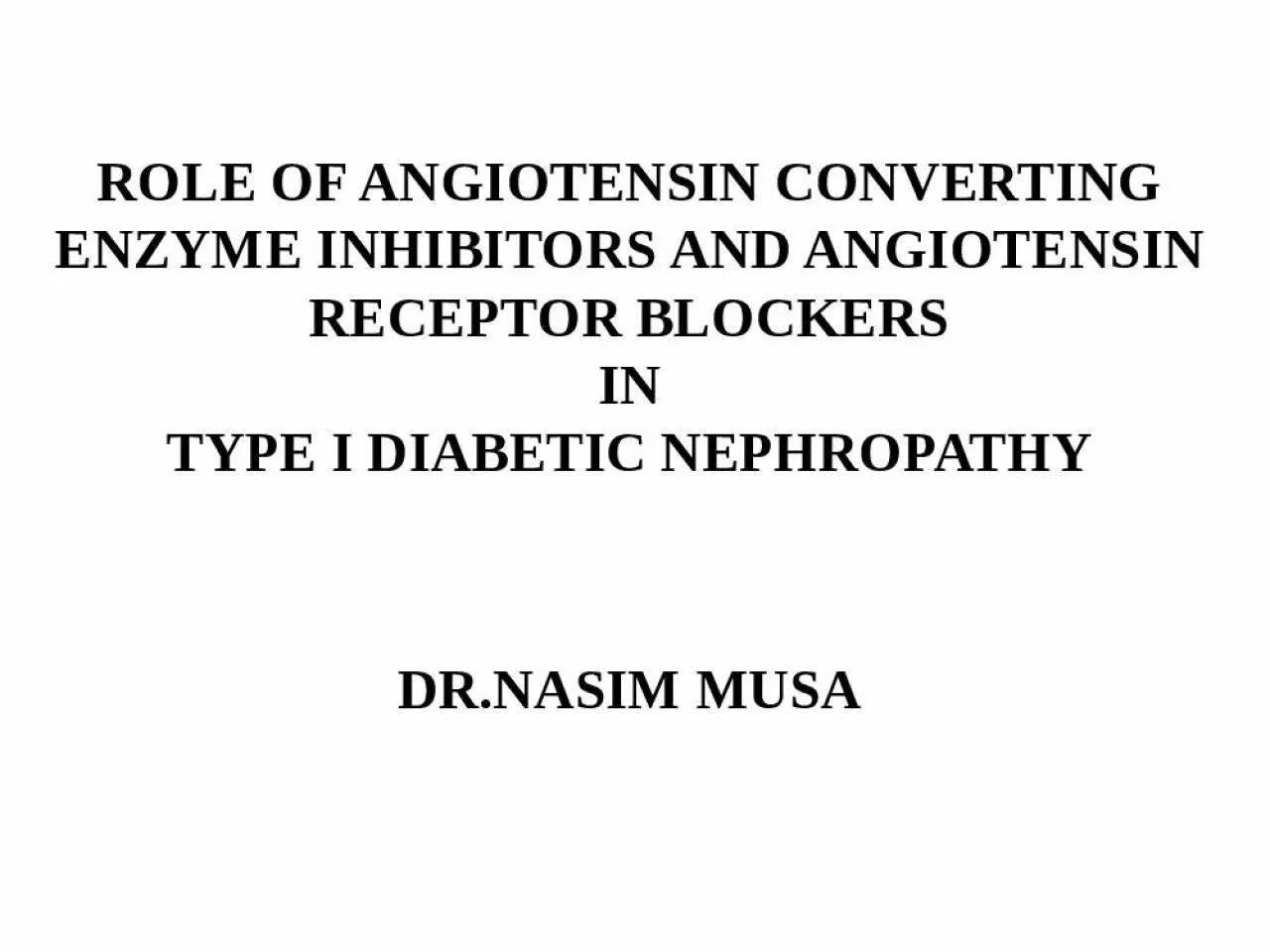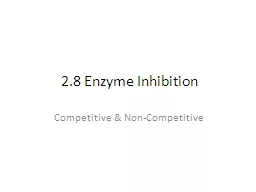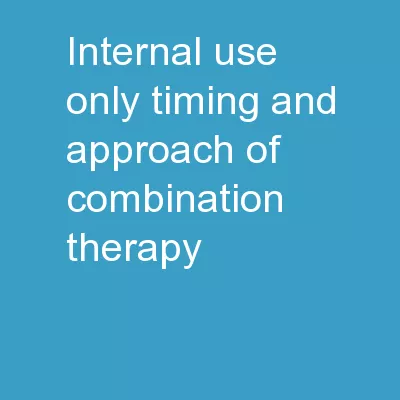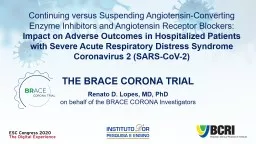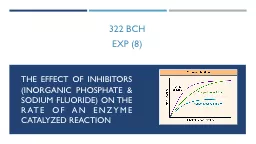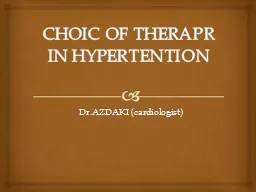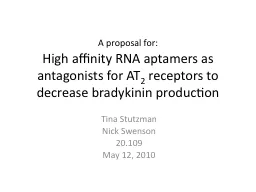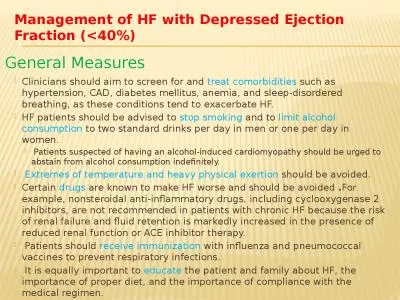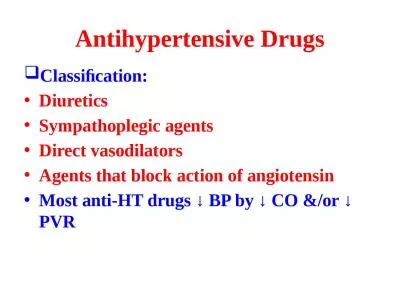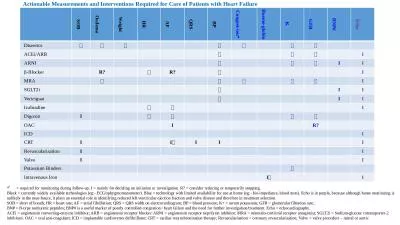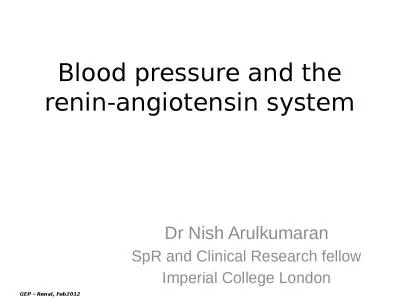PPT-ROLE OF ANGIOTENSIN CONVERTING ENZYME INHIBITORS AND ANGIOTENSIN RECEPTOR BLOCKERS
Author : elise | Published Date : 2022-02-10
IN TYPE I DIABETIC NEPHROPATHY DRNASIM MUSA Type I IDDM is characterized by The abrupt onset of symptoms Insulinopenia Dependence on injected insulin for life Proneness
Presentation Embed Code
Download Presentation
Download Presentation The PPT/PDF document "ROLE OF ANGIOTENSIN CONVERTING ENZYME IN..." is the property of its rightful owner. Permission is granted to download and print the materials on this website for personal, non-commercial use only, and to display it on your personal computer provided you do not modify the materials and that you retain all copyright notices contained in the materials. By downloading content from our website, you accept the terms of this agreement.
ROLE OF ANGIOTENSIN CONVERTING ENZYME INHIBITORS AND ANGIOTENSIN RECEPTOR BLOCKERS: Transcript
Download Rules Of Document
"ROLE OF ANGIOTENSIN CONVERTING ENZYME INHIBITORS AND ANGIOTENSIN RECEPTOR BLOCKERS"The content belongs to its owner. You may download and print it for personal use, without modification, and keep all copyright notices. By downloading, you agree to these terms.
Related Documents

